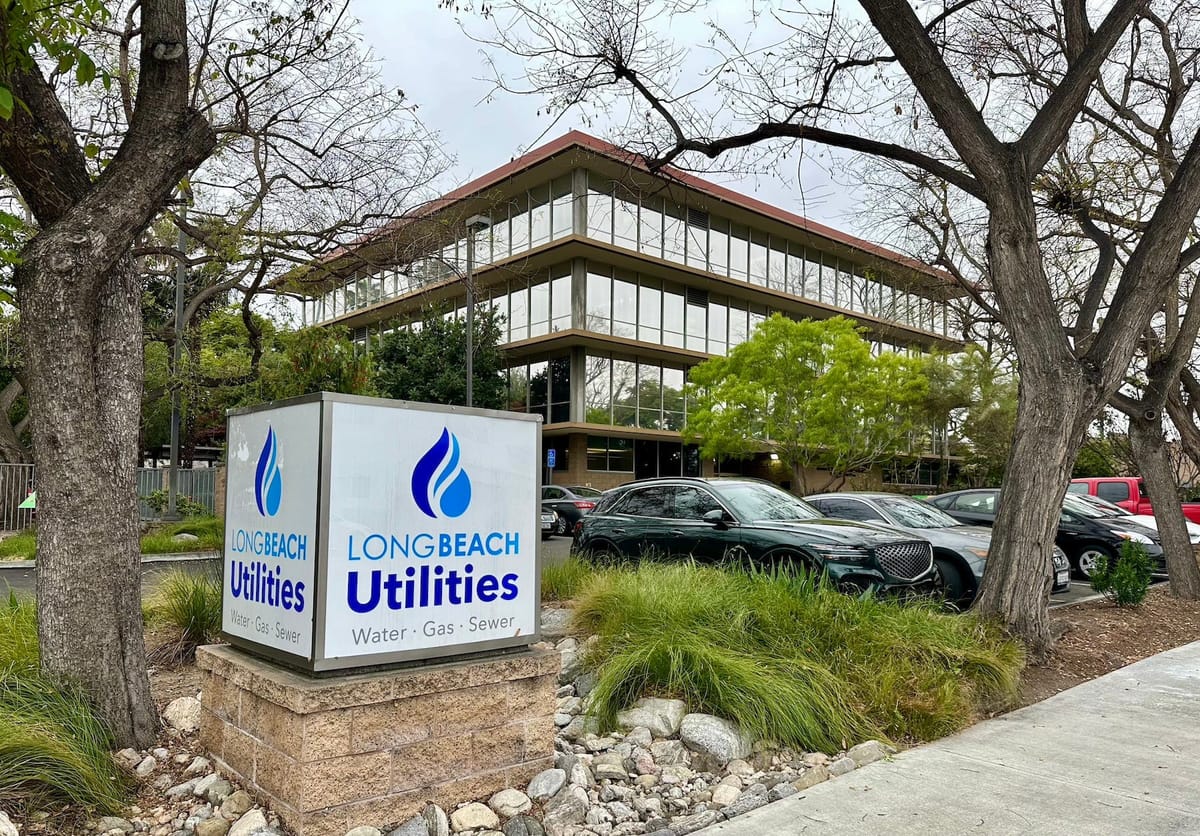New Long Beach Utilities campus could be expensive, department looking at options
Three options were presented to a Long Beach Utilities Commission committee last week and the potential price tag ranges from $195 million to $214 million.

The cost of building a new headquarters for Long Beach Utilities could exceed $210 million as the department works to consolidate its campus nearly two years after voters approved a merger of the city-run utilities.
The Long Beach Utilities Commission’s Infrastructure Committee was presented with some early design ideas Thursday on how to best relocate employees of the gas, water and sewer operations to fewer locations across the city
Currently, the department’s operations are spread across three locations and early design proposals could see them consolidating to as little as one location. Early projected costs range from $195 million to $214 million, according to a presentation from Gillis and Panichapan Architects, the firm hired by the department for the project.
The discussions are preliminary as department officials still have to figure out how to finance a new campus, determine if the Long Beach Airport will swap land with it to complete some of the build-out options and have the department’s existing land holdings appraised.
Parcels like the department’s current headquarters at 1800 E. Wardlow Rd. and the gas campus at the intersection of Spring Street and Junipero Avenue could be leased or sold to help offset the cost of the project.
“I think that’s a key component to the whole puzzle,” Commissioner Kevin Scott said Thursday. “Until we have that information, I think we keep it at the committee level.”
Utilities General Manager Chris Garner said that the parcel where the current administration sits on Wardlow could have some potential for residential uses and that could make the property more valuable.
All three options include adding structures to the department’s water treatment facility located at the corner of Redondo Avenue and Spring Street.

The $210 million option that would bring nearly all the department’s nearly 600 employees and over 1,000 vehicles onto one site could include a six-story parking structure as well as a new headquarters and service garages for the department’s fleet.
This campus would also include a new community meeting room where monthly meetings and other hearings over proposed rate increases can be held. Those are currently held inside the water treatment facility.
It would require a land swap with the airport, as it requires an additional 15 acres of space south of the treatment plant for new structures and storage area to be built. The water treatment site has underground utilities on its eastern flank that would make it hard for new construction so that area is being avoided.
The other two options would include new structures at the gas campus and the water treatment site but the department’s preference has been to bring as many employees as possible to one space, something it says could increase productivity and allow for the sharing of resources.
Regardless of which option the commission chooses, some department employees may have to remain offsite.
In October 2022, before voters approved the merger of the water, sewer and gas utilities, the Energy Resources Department agreed to help pay for the purchase of a vacant Downtown building on Elm Avenue where gas utility employees would eventually work. About $6 million has already been pledged to the purchase of the building, with another $6.5 million in renovations expected to follow.
Department officials say that space should be used, given the investment into the property, though they said they could also look to lease that space to another city department, which would then pay rent to the Utilities Department.
The infrastructure committee is expected to continue discussing the campus rebuild options in the coming months before potentially sending the issue to the full board for a vote.
We need your support.
Subcribe to the Watchdog today.
The Long Beach Watchdog is owned by journalists, and paid for by readers like you. If independent, local reporting like the story you just read is important to you, support our work by becoming a subscriber.





